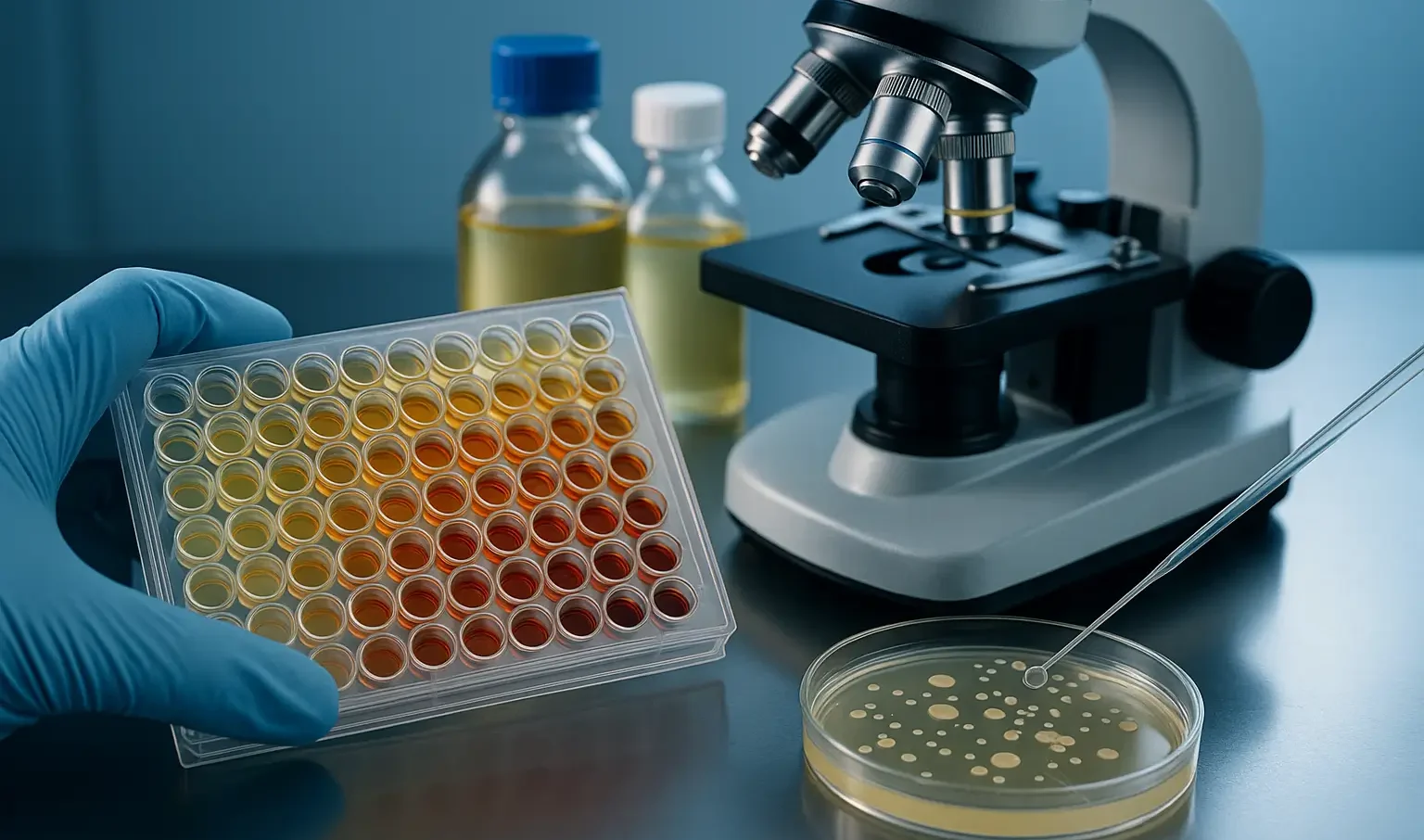- Evaluating of microbial stability of formulations is crucial to ensure that the product remains safe and effective throughout its shelf life.
- This involves several testing methods and standards:
1. Microbial Limit Tests (MLT) for Evaluation of Microbial Stability of Formulations:
- Purpose: Determine the number of viable aerobic microorganisms in non-sterile products.
-
Methods:
2. Preservative Efficacy Testing (PET) or Antimicrobial Effectiveness Testing (AET):
- Purpose: Evaluate the efficacy of antimicrobial preservatives in a product.
-
Procedure:
- The product is inoculated with a specified number of microorganisms (bacteria, fungi, and yeast).
- Samples are taken at specific intervals (e.g., 0, 7, 14, and 28 days) to determine the number of surviving microorganisms.
- The preservative system passes if it reduces and maintains microbial counts within acceptable limits defined by pharmacopeial standards (e.g., USP, EP).
3. Sterility Testing:
- Purpose: Ensure that sterile products (e.g., injectables, ophthalmics) are free from viable microorganisms.
-
Methods:
- Direct Inoculation: The product is added directly to a culture medium.
- Membrane Filtration: The product is filtered through a membrane that captures microorganisms, followed by incubation in culture media.
4. Container-Closure Integrity Testing (CCIT):
- Purpose: Ensure that the packaging maintains a sterile barrier.
-
Methods:
- Dye Ingress: Detects leaks by the ingress of a dye solution.
- Microbial Ingress: Uses a microbial challenge to test the integrity.
- Vacuum Decay and Pressure Decay: Detects leaks based on changes in pressure.
5. Stability Testing:
- Purpose: Assess the product’s stability over its intended shelf life under various conditions (temperature, humidity, light).
-
Microbial Stability Testing:
- Periodic sampling and microbial testing (TAMC, TYMC) during stability studies.
- Evaluation of preservative efficacy over time.
6. Factors Influencing Microbial Stability
-
Formulation Components:
- Water Activity: Lower water activity reduces microbial growth.
- pH: Optimal pH range enhances preservative efficacy.
- Active Pharmaceutical Ingredients (APIs): Some APIs have inherent antimicrobial properties.
-
Storage Conditions:
- Temperature: Higher temperatures can increase microbial growth and decrease preservative effectiveness.
- Humidity: High humidity can promote microbial proliferation.
-
Packaging:
- Type: Hermetically sealed packaging prevents contamination.
- Material: Use of antimicrobial materials or coatings.
-
Manufacturing Process:
- Good Manufacturing Practices (GMP): Ensures hygienic conditions during production.
- Sterilization: Techniques like autoclaving or irradiation to eliminate contaminants.Bottom of Form

